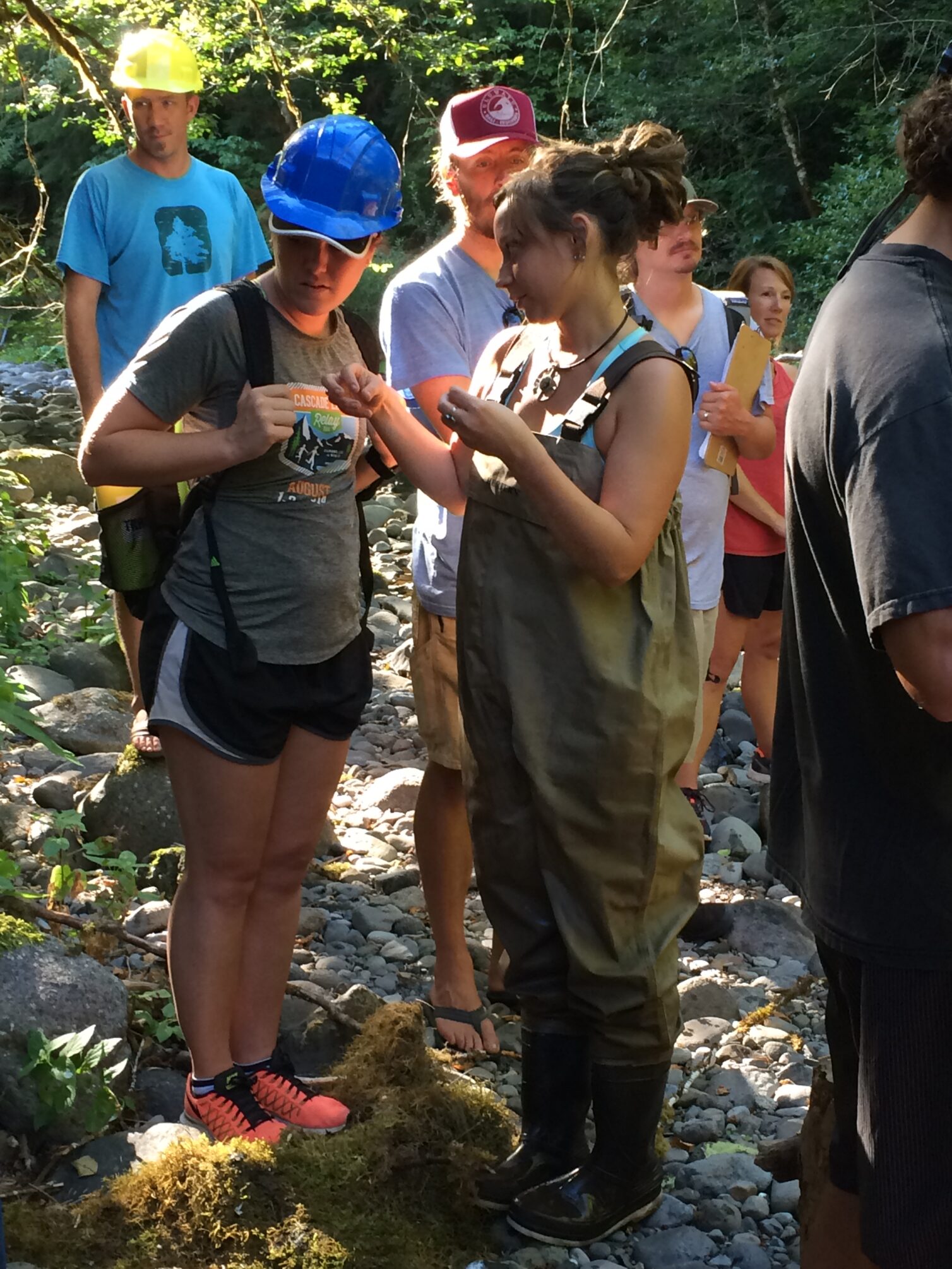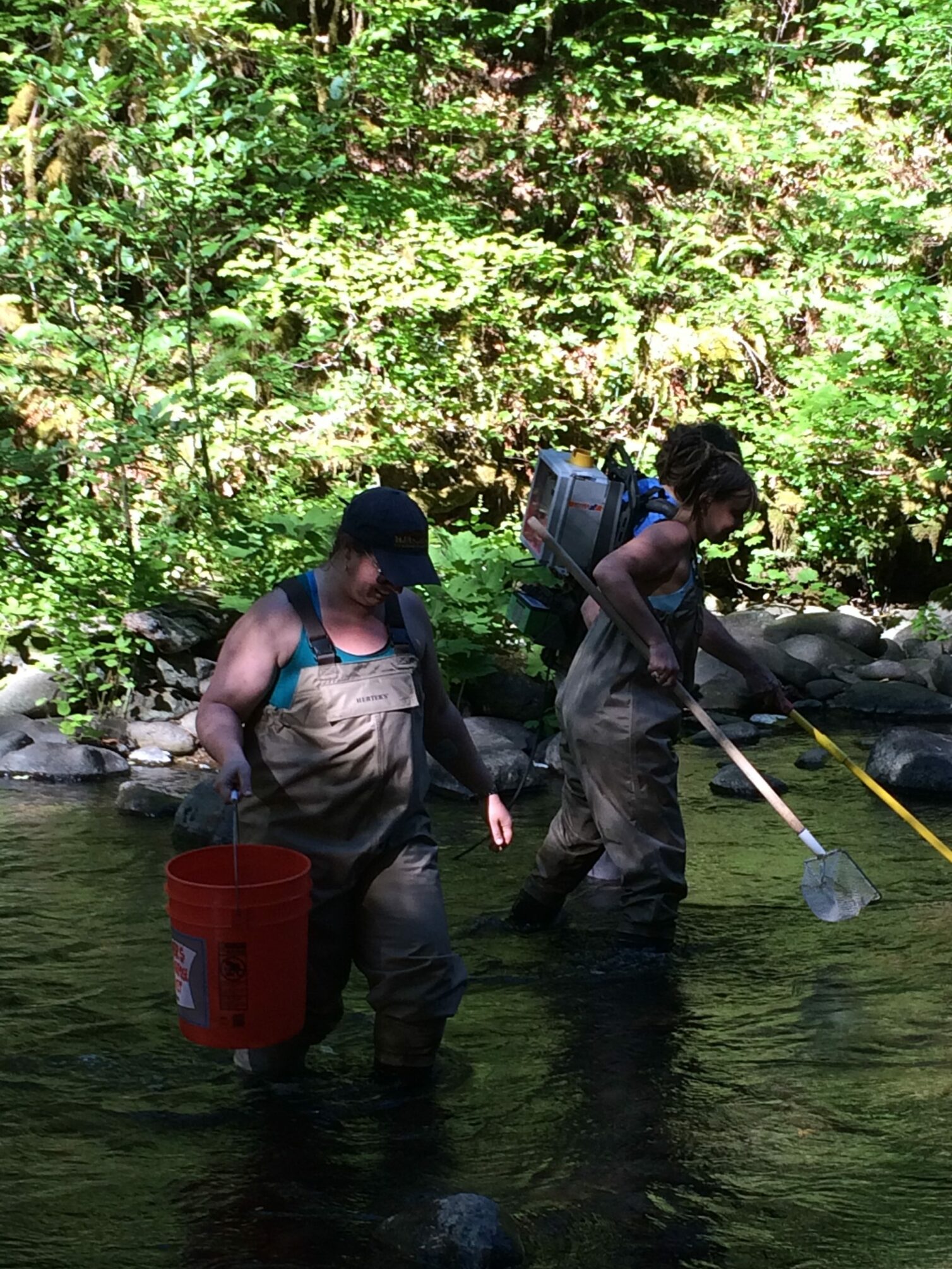
Credit: CC BY-SA 4.0: Kari O'Connell
Many species that rely upon mountain streams may experience stress from reduced summer habitat, increased water temperature, and increased vulnerability to predators. Which species respond and how they respond to climate change and stream drying is an important question. RETs conducting research on biodiversity and riverscapes will work alongside Dr. Ivan Arismendi from Oregon State University and his research team to examine how patterns of invertebrate and vertebrate biodiversity differ along an upstream-downstream gradient of elevation. Patterns of biodiversity as well as stream habitat characteristics will be investigated by sampling along the mainstem of Lookout Creek during summer.
Prior to the sampling period in summer, RETs will receive training in fieldwork techniques, use of species identification keys, species detection using trail cameras, and database organization and management. Teachers will start with a week of training and research site selection and then work with an established field crew to conduct their work in weeks 2-4. Example projects include the description of biodiversity of riparian invertebrates, aquatic macroinvertebrates, and terrestrial vertebrates.

Field commitment for this research experience is from July 10th – August 4th. The typical workday includes traveling (driving) from HJA headquarters to sampling sites (15-60 min) in the morning. Then, collect samples (or download information from camera traps) during the day. Lunchtime will be at the field sites and return to headquarters after visiting all sampling sites around 4-5 pm. RETs will live in apartment-style housing at the Andrews field station. Visit our YouTube channel for more information about stream invertebrate sampling.
